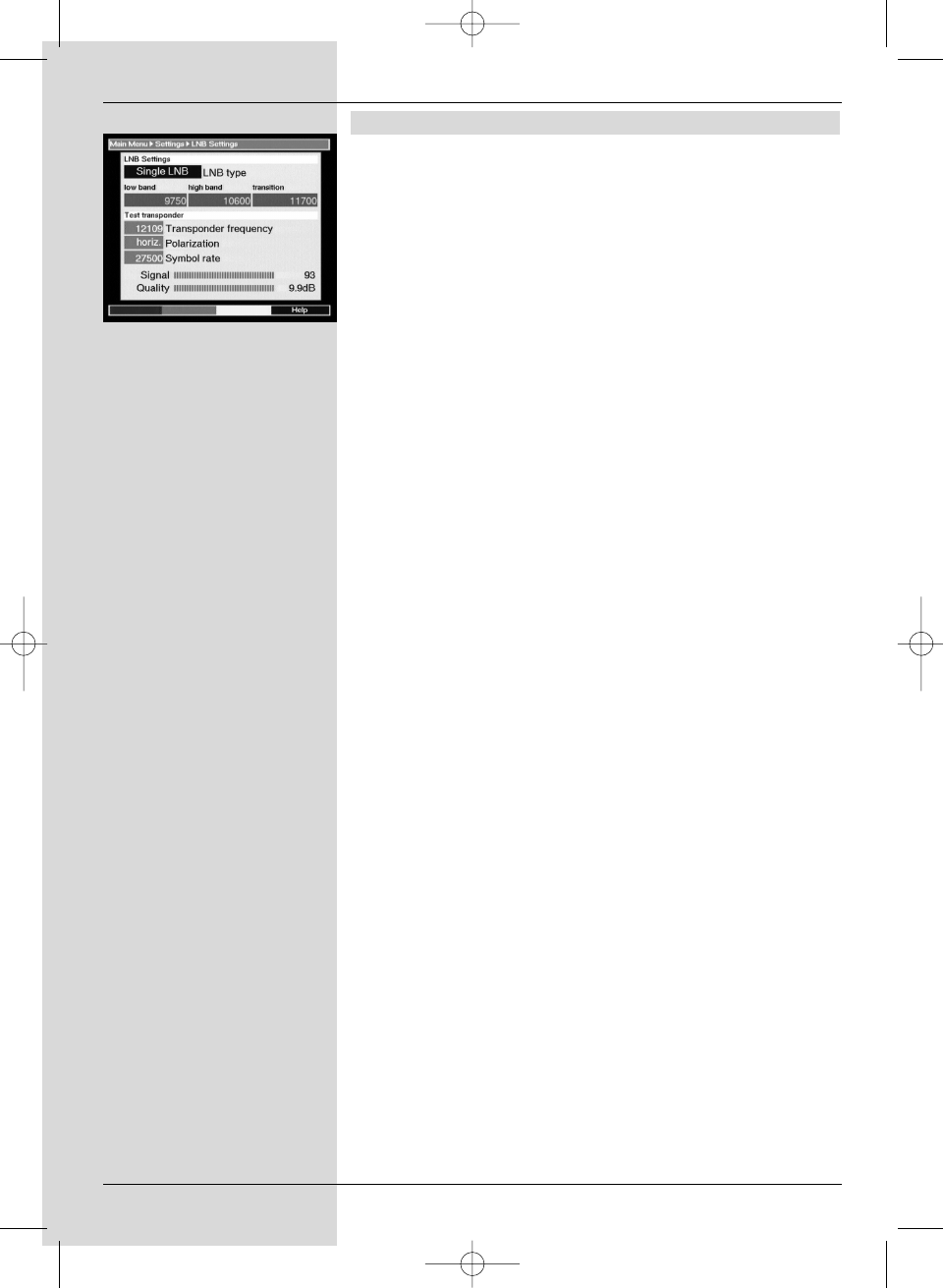
5.4.3 Additional Settings
Once you have adjusted the switching matrix of your DVB
receiver to the requirements of your receiving installation,
you should now check and, if necessary, correct the other
settings relating to your receiving unit.
> Use the arrow keys left/right to move the marker to
the item LNB Test.
> Now, in the line whose setting you wish to change, use
the arrow keys up/down to select the field
Continue.
> Confirm by pressing OK. The menu LNB Settings
will be displayed.
(Fig. 5-9)
The following settings can be effected in this menu:
DiSEqC Type
> In this line, use the arrow keys left/right to select the
type of LNB you are using. You can choose from
Single LNB, Quatro LNB, DisiCon 1 LNB,
DisiCon 2 LNB, DisiCon 4 LNB, C-Band LNB
and a User LNB, for manual entry of LNB data.
> Press OK to accept the setting and store it in memory.
Test Transponder
The following items of this menu should only be entered when
you wish to test the signal of a particular satellite.
Transponder frequency
In this line, use the numeric keys to enter a frequency on
which digital programmes are broadcast.
Polarisation
Use the arrow keys up/down to enter the desired polarisati-
on plane (horizontal or vertical).
Symbol rate
The symbol rate indicates the volume of data transmitted per
second. For example, this could be 27500 (27500 symbols
per second). Use the numeric keys to enter the appropriate
value.
User LNB
If you have selected the DiSEqC Type User LNB, you can
select further parameters:
LOF low band
LOF (Local oscillator frequency) is the frequency used to
convert the received frequency into the so-called 1.
intermediate frequency, which can then be interpreted by the
receiver. So-called Universal LNBs utilize 2 LOFs to cover the
entire reception range of 10.7 to 11,8 GHz (low-band) and
11,7 to 12,75 GHz (high band).
> In this line, use the numeric keys to enter the LOF of
the low band of your LNB.
14
(Fig. 5-9)
bed_anl_DIGITY CI_Quark3_en.qxd 31.01.03 16:47 Seite 14


















